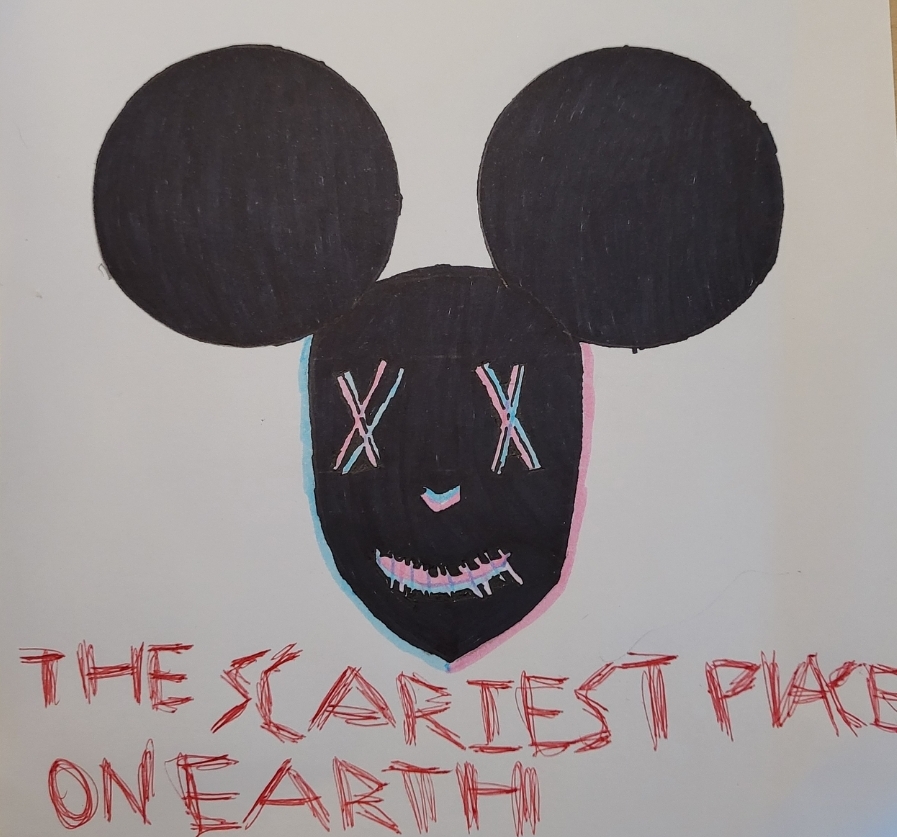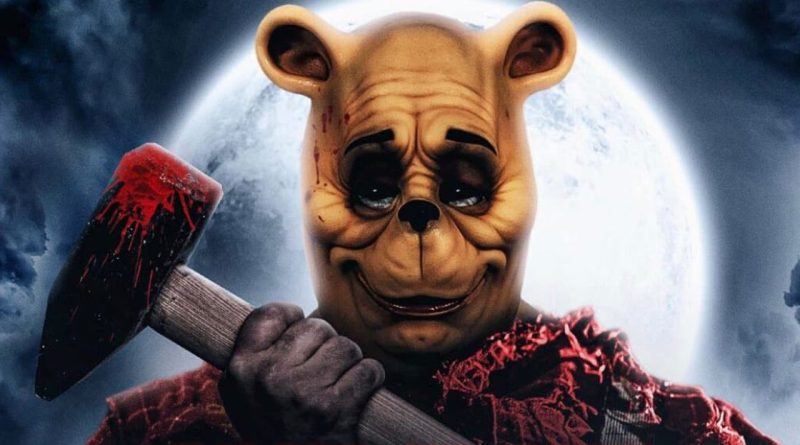No more strings attached: Exploring the trend of Disney-themed horror films
Thanks to public domain laws, more movie studios are riding the trend of making horror movies based on Disney characters. Is there more behind the murderous masks these characters wear?
This is not a joke anymore. Film studios have been announcing new horror movies back-to-back based on Disney characters, thanks to many of these characters entering the public domain. The massive box-office success of “Winnie-the-Pooh: Blood and Honey” in its first few weeks in theaters is certainly a factor as well.
Although the movie had such a low score on websites like Rotten Tomatoes and IMDb, it still attracted people to theaters, as seen through the film making $5.2 million globally as The Hollywood Reporter stated. Attracting people to the movie theater is the current goal of Hollywood due to streaming services making people stay home, and horror movies seem like the best way to do so.
Now, the upcoming lineup includes “Peter Pan’s Neverland Nightmare” and “Bambi: The Reckoning,” which are being directed by the same studio and director of “Winnie-the-Pooh: Blood and Honey,” along with a sequel to “Winnie-the-Pooh: Blood and Honey.” Additionally, two separate movie studios have announced they are making their own Mickey Mouse horror movies immediately after Steamboat Willie entered the public domain.
First announced was “Mickey’s Mouse Trap” by Bailey Phillips Production few days after Steamboat Willie entered the public domain. Said trailer’s comment section is full of people laughing at the new rising trend in Hollywood’s horror genre and how quickly studios jump on the opportunity to twist a Disney character’s image. These comments are also found in “The Return of Steamboat Willie” by Fewture Studios when the teaser trailer was released on January 22.
As a horror and dark humor fan myself, I’m currently laughing at this trend but also questioning these studios’ creative route. Maybe this current trend in horror movies is more than a gag or grab for money, since it is smaller and newer studios making them like Jagged Edge Productions. This is something that many people have caught as well, like UWT professor Dr. Dillman, who has a focus in film studies. One of the classes she teaches at UWT is screenwriting, and as a screenwriter herself she had found many layers to this trend.
At first glance, like me, she found this growing trend to be funny, especially with the Winnie-the-Pooh movie, since she grew up watching the character and his friends. However, upon watching the intro to “Weenie-the-Pooh: Blood and Honey,” she couldn’t help but be enchanted by the opening animation that honors the original source material. Because of that, she believes that this trend could be a form of rebellion.
“Steamboat Willie copyright was made in ‘28 while Weenie-the-Pooh was in ‘26,” said Dr. Dillman. “Disney has had both characters under their complete control for 95 years, meaning no one else could use these characters, especially since Disney keeps changing their designs to keep control over them.”
“But if you are to look back at the short films like Steamboat Willie,” continued Dr. Dillman, “you’ll notice that Mickey Mouse doesn’t act like he does now, for back then his cartoons were more transgressive. The Mickey we know currently and that has been around is very sanitized. He isn’t as mischievous as he was when he first came out.”

I agree with Dr. Dillman. She states that if you rewatch Steamboat Willie, you’ll see Mickey Mouse throwing things at other characters and rebelling against his boss, while modern day Mickey is very nice and doesn’t resort to violence, even in a playful way like his original self did. In the film we also see other forms of transgressive acts like Mickey’s boss destroying his body’s integrity.
We see these moments of transgressions a lot in children’s shows because real world rules don’t apply to cartoons, allowing kids to laugh and imagine many possibilities. But those possibilities and childhood innocence are destroyed when we grow up.
This is where the horror genre comes in, which is on the other side of the coin of these cartoonish transgressive acts. The horror genre shows its transgressive acts in a more violent way through body horror. Reminding Dr. Dillman what film scholar Linda William wrote once about the horror genre’s transgressions, similar to cartoons, the horror genre pleases people by showing the transgressions that break the boundaries by which we are restricted. It appeals to the childhood wonder we once had, but in a more mature way.
“These new horror movies are honoring the older eras by reminding us of the transgressive behaviors of the characters had originally instead of showing us the sanitized version we have of them currently,” said Dr Dillman. “The sanitized versions want us to forget the body horrors, the racism, and sexism the originals had. These horror movies also reflect the difficulty of us growing up as shown through Christapher Robin leaving the 100 Acre group due to growing up in the movie. Fans can relate to him since they too were forced to abandon their childhood but upon coming back to it, they see things have changed.”
This is something UWT student of Dr. Dillman and horror fan Grace Greer agrees with as well. As someone who grew up going to Disneyland often, she agrees that looking back at Disney she has learned about the horrors of the company’s past, and finds that the stories aren’t same as they used to be. She now sees the darkness behind the sanitized versions of Disney characters which these spooky movies reflect. They reflect how, as adults, we now know Disney isn’t as wholesome as they claim to be, hence believing these movies are brilliant.
Greer also brings a new perspective into this conversation by saying these movies can be seen as smaller studios flipping off Disney for hogging up the industry and trying to hide the terrible things they’ve done, like villainizing the LGBTQIA+ community. These are things we don’t find out about until we grow up, shattering the illusions we had when we were kids through the sanitized stories we were told. No one in this world is truly good, even the so-called happiest place on Earth.
“The horror movies show the complex relationships people have with the company, limiting access to who the entertainment represents and not defending many of their employees,” Greer said. “Disney shuts down ideas of their creative team to get money. But their money doesn’t go into their employees’ checks who work to make the magic. It goes to the executives instead!”
Greer feels this way due to having friends and family who have worked for Disney. I’m inclined to agree, for one of my friend’s parents is an artist for Disney but isn’t paid well for the high position they are in.
“The Mickey horror movie could be seen as a metaphor for how Disney’s corporate actions have killed our childhood by revealing their true colors when we grow up, killing the creativity of their employees,” Greer said. “Brothers’ Grim stories were meant to get children to behave by showing the dark side of the world, which modern Disney tales don’t show. The films could be seen as telling us to rebel against Disney, who has had a chokehold on the industry for 100 years now.”
In my opinion, which Greer agrees with, these movies could also be showing how we our views of our childhood shift as we grow up, reflecting our trauma. For example, when we were kids, we thought certain dolls or toys were fun and cute, but now we look back at them and find them creepy. Horror movies tend to twist things from our childhood in such a way, like the Chucky franchise. This is the same with many fairy tales. Some of them are creepy when you think about them too much, which leads to horrific possibilities.
At the end of the day, we can only theorize about why this is a rising trend. Is it to honor the past by revealing it to us? Is it for a good laugh? Is it for money? Any way you look at it, the mouse is getting flipped off by smaller studios. For now, all we can do is wait for the next Disney character to enter the public domain and see what horror movie is created. And ask yourself, which character would you like to see to star in a horror movie? What story will it tell?



